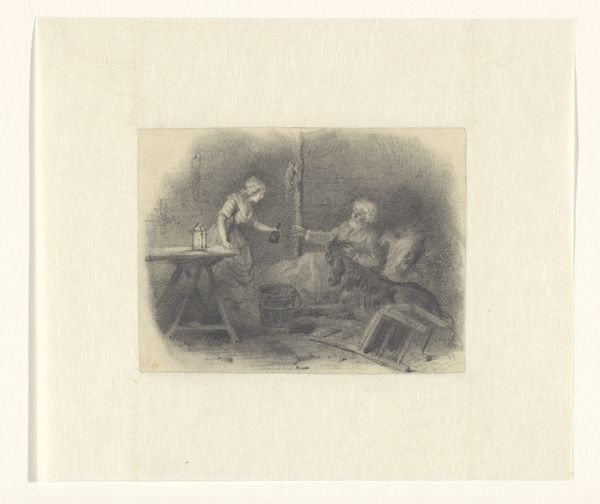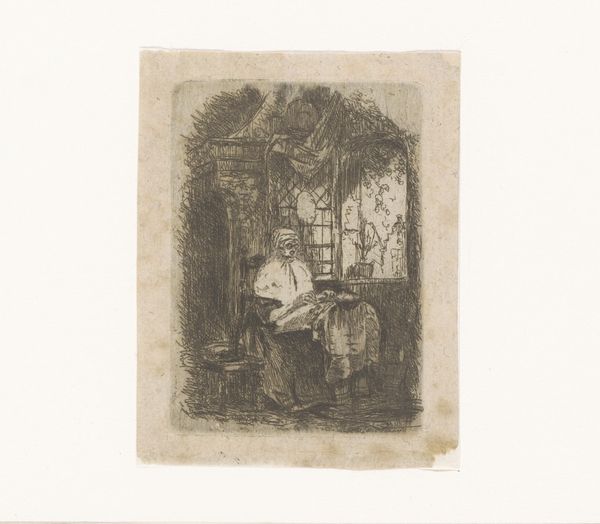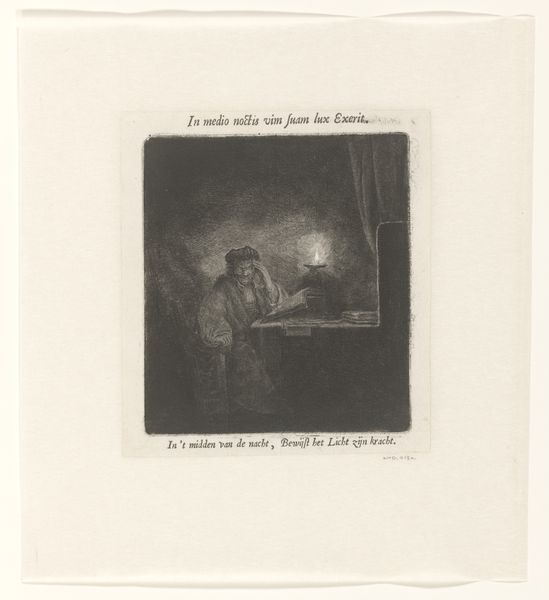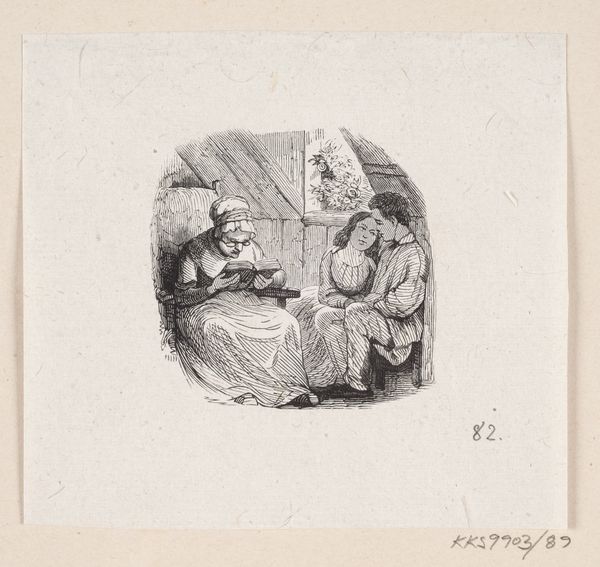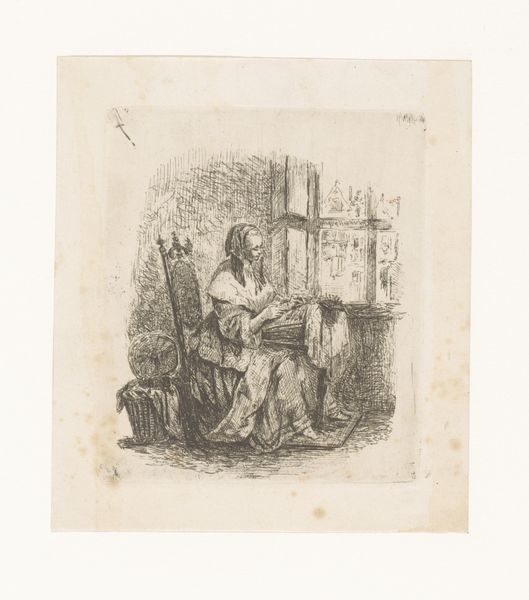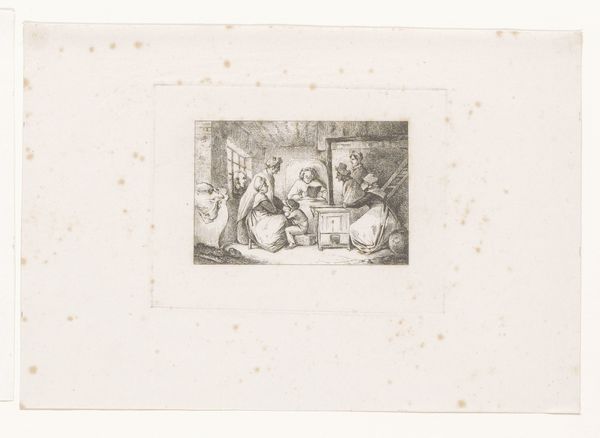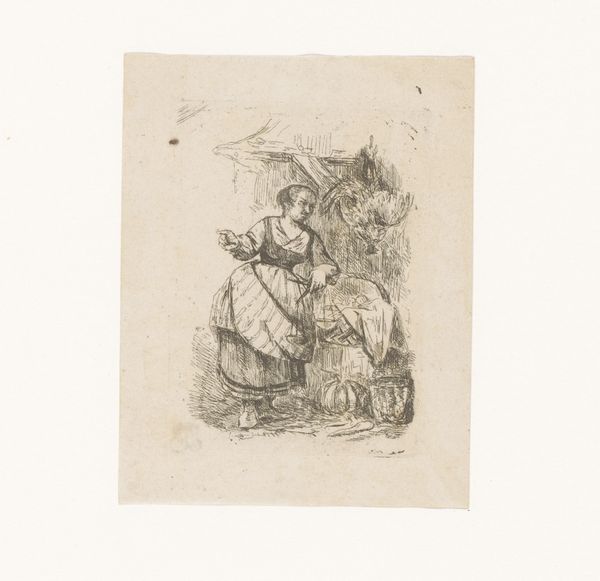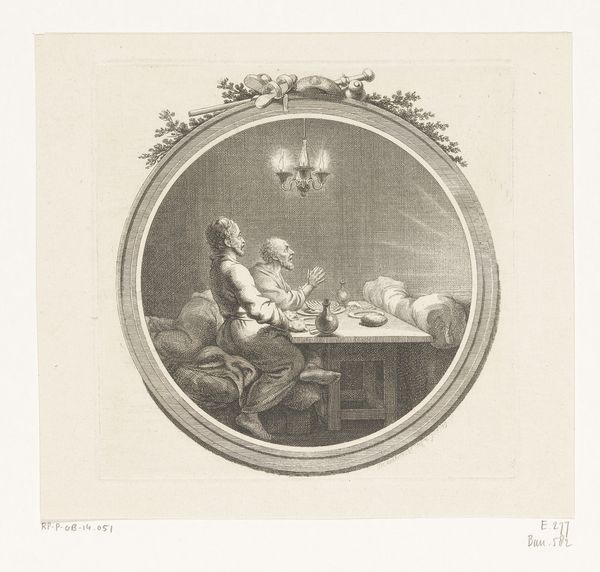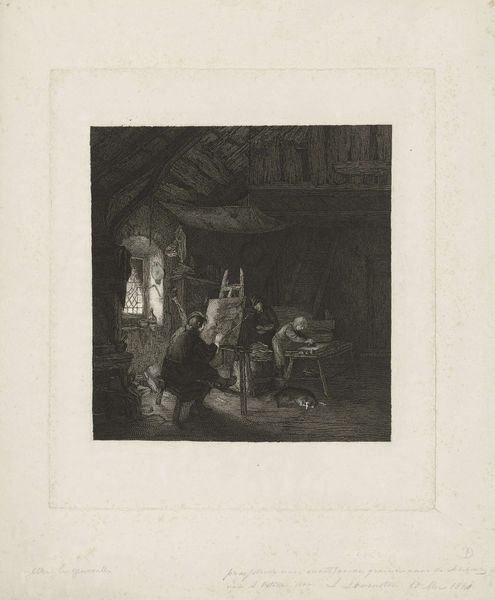
drawing, print, etching
#
drawing
#
table
# print
#
etching
#
charcoal drawing
#
figuration
#
pencil drawing
#
genre-painting
#
history-painting
#
academic-art
Dimensions: height 126 mm, width 96 mm
Copyright: Rijks Museum: Open Domain
Curator: So, here we have Charles Jacque's "Three Figures at a Table with a Portrait of a Woman Below", made in 1844. It seems to be a print, probably an etching. Editor: It's fascinating how much detail he gets with what looks like minimal lines. The lower portrait feels very separate from the scene above, almost like an afterthought. What's your read on it? Curator: For me, it immediately raises questions about the production process. The etching technique itself—how does that impact the kinds of images he could create, the distribution, the cost? The contrast between the gritty scene of labor above and the detached portrait hints at social divisions. Were these prints aimed at a specific class? What sort of labor would this have entailed for Jacque? Editor: That's an interesting perspective. I was more focused on the narrative hinted at in the scene. But thinking about the labor involved does change things. Curator: Exactly! Think about the materials too: the paper, the ink, the tools. How readily available would they be, and who controlled their access? Were the figures at the table part of a burgeoning working class depicted through a specific print-making practice? The relationship of his chosen materials impacts the kind of labor performed and how this social hierarchy is manifested and perpetuated, right? Editor: So, by analyzing the materials and method, you’re essentially tracing the economic and social landscape of its creation? Curator: Precisely! The etching becomes a record of the artist's labor and a reflection of the wider economic and social forces at play. The placement of the figures at the table hints at an underlying current and shared meal, and through his art, it immortalizes their actions. Editor: I never considered that before. Looking at it this way opens up a whole new understanding of art’s place in history. Curator: Indeed, shifting the focus from simply what is represented, to how it was made and the context of production, helps us reveal so much more.
Comments
No comments
Be the first to comment and join the conversation on the ultimate creative platform.
